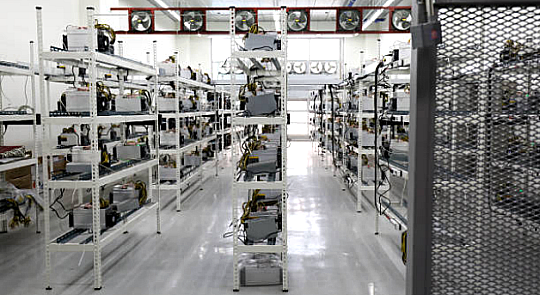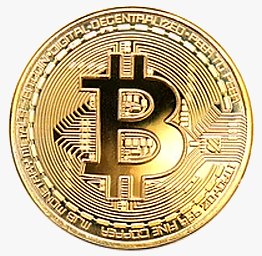Accredited InvestorsAltcoinAnatoli UnitskyAnti-Money Laundering (AML) In CryptoAPIArbitrageArtCoin TokenArticle DirectoryASICAuction Terminology GlossaryBasics of Stock Market InvestingBear MarketBest Crypto Payment Provider In the WorldBitcoinBlockchainBlockchain ConfirmationBlockchain Consensus MechanismBlockchain ForkBlockchain GlossaryBored Ape Yacht ClubBuild a Business That OutperformsBull MarketBuying SkyWay SharesByzantine Fault Tolerance (BFT) ExplainedCasascius CoinCentral Bank Digital Currency (CBDC)Centralized Crypto ExchangeCoinCoinsetCold WalletCollateralCommodity Futures Trading Commission (CFTC)Cross-Chain TechnologyCRUCrypto ExchangeCrypto GlossaryCrypto JokesCrypto Terms to KnowCrypto TickerCryptocurrencyCryptographyCryptojackingCryptounit BlockchainCryptounit GlossaryCryptounit ProgramdApp (Decentralized Application)Dead CoinDecentralized Exchange (DEX)Decentralized Finance (DeFi)Difference Between Bitcoin and EthereumDifferent Ways of Investing MoneyDigital CurrencyDistributed LedgerDo Your Own Research (DYOR)Dollar Cost Averaging (DCA)Dow Jones Industrial Average (DJIA)EncryptionERC-20ERC-721EthereumEvoScentFear Of Missing Out (FOMO)Fear, Uncertainty and Doubt (FUD)Fiat MoneyFNT Fintech CompanyGenesis BlockGlobal Unit PayGlossary of Banking TermsGlossary of Business TermsGlossary of Financial TermsHalvingHODLHot WalletHow Do I Start InvestingHow Rich is Satoshi Nakamoto?How to Create a BlockchainHow to Find Private InvestorsHow to Get Into FintechHow to Program Smart ContractsI Am Thrilled to Be a Part of This Global ProjectInitial Coin Offering (ICO)Initial Public Offering (IPO)Initial Token Offering (ITO)Innovation Basalt TechnologyInnovative Transportation TechnologiesInternational Bank Account Number (IBAN)Investing in Gold Mining StocksInvesting in Gold MiningJagerJoy of Missing Out (JOMO)Know Your Customer (KYC)LedgerLiquidity in CryptocurrencyMaker and Taker Fees in Crypto TradingMarket Capitalization (Market Cap)Meme CoinMetal Credit CardMetaMaskMillenials Now Have Access to Generational WealthMy Best Investment EverNew Digital EvolutionNFT GlossaryOff-Chain TransactionsOn-Chain TransactionsOpen Edition NFTPeer-to-Peer (P2P)Personal Loan GlossaryProbably the Best STO on the MarketProof of Stake (PoS)Real Estate Glossary of TermsReal Estate Investing GlossaryRebase TokenSecurities and Exchange Commission (SEC)Security Token ExchangesSecurity Token Offering (STO)Soulbound Decentralized Identities for Security TokensSoulbound ID Launch by Stobox Proves a SuccessSoulbound TokensStoboxStock Market GlossaryTestimonialsTether Platform and Token (USDT)UnitEx ExchangeUnitsky String TechnologiesUNTBUSDUValidatorWe Started Investing When We Were 25What are Blue Chip NFT?What are Blue Chip Stocks?What are Crypto Assets?What are Crypto Smart Contracts?What are CryptoPunks NFT?What are Digital Assets?What are Digital Collectibles?What are Gas Fees?What are Gas Wars?What are Hashmasks?What are Non Fungible Tokens?What are Non-Sufficient Funds (NSF)?What are Soulbound Tokens (SBT)?What are Stablecoins in Crypto?What are Transactions Per Second (TPS)?What are Utility NFTs?What are Utility Tokens?What Does Burning Crypto Mean?What Does Diamond Hands Mean?What Does Paper Hands Mean?What Does To The Moon Mean?What Does WAGMI Mean?What Happened to Satoshi Nakamoto?What is a 51% Attack?What is a Baby Boomer?What is a Backlink?What is a Banner?What is a Barcode?What is a Bid-Ask Spread in Crypto?What is a Block in Blockchain?What is a Block Reward?What is a Blockchain Address?What is a Blockchain Node?What is a Blockchain Oracle?What is a Blog?What is a Bond?What is a Bot?What is a Broker?What is a Business Accelerator?What is a Cash Cow?What is a Commercial Bank?What is a Commodity?What is a Con?What is a Credit?What is a Credit Limit?What is a Credit Rating?What is a Crypto Airdrop?What is a Crypto Bridge?What is a Crypto Scam?What is a Crypto Token?What is a Crypto Wallet?What is a Crypto Whale?What is a Crypto Winter?What is a Cryptocurrency Public Ledger?What is a Cryptocurrency Roadmap?What is a DAO?What is a Dark Pool?What is a Day Trader?What is a Dead Cat Bounce?What is a Default?What is a Derivative?What is a Digital Credit Card?What is a Fiscal Quarter?What is a Fungible Token?What is a Governance Token?What is a Grace Period?What is a Hard Fork?What is a Hot Wallet?What is a Hybrid Blockchain?What is a Hybrid PoW/PoS?What is a Joint Account?What is a Market Cap?What is a Merkle Tree in Blockchain?What is a Mining Farm?What is a Nonce? What is a PFP NFT?What is a POS System?What is a Prepaid Card?What is a Private Blockchain?What is a Private Key?What is a Public Blockchain?What is a Public Key?What is a Reserve Currency?What is a Ring Signature?What is a Routing Number?What is a Rug Pull in Crypto?What is a Safe Deposit Box?What is a Satoshi?What is a Security Token?What is a Seed Phrase?What is a Shitcoin?What is a Sidechain?What is a Soft Fork?What is a Spot Market?What is a State Bank?What is a SWIFT Code?What is a Tax Identification Number (TIN)?What is a Time Deposit?What is a Transaction Account?What is a Variable Interest Rate?What is a Virtual Assistant (VA)?What is a Virtual Card?What is a Virtual Currency?What is a Visa Card?What is a Whitelist in Crypto?What is a Whitepaper?What is Accounts Payable (AP)?What is AMA in Crypto?What is Amortization?What is an Accrual?What is an ACH Transfer?What is an Actuary?What is an Addendum?What is an Algorithm?What is an Angel Investor?What is an Annuity?What is an Asset?What is an ATM?What is an Atomic Swap?What is an Audit?What is an Avatar?What is an EIN?What is an Embargo?What is an Entrepreneur?What is an IDO (Initial Dex Offering)?What is an Interest Rate?What is an Internet cookie?What is an Investment Bank?What is an NFT Drop?What is an NFT Floor Price?What is an Ommer Block?What is an Orphan Block?What is an Outstanding Check?What is an Overdraft?What is Artificial Intelligence (AI)?What is B2B (Business-to-Business)?What is B2G (Business-to-Government)?What is Bartering?What is Bitcoin Dominance?What is Bitcoin Pizza Day?What is Blockchain Immutability?What is Blockchain Used For?What is BRICS?What is Business-to-Consumer (B2C)?What is C2C (Customer to Customer)?What is Capitalism?What is Catfishing?What is CFD Trading?What is Check Kiting?What is Cloud Mining?What is Communism?What is Content Marketing?What is Decentralization in Blockchain?What is DeFi in Crypto?What is Delisting?What is Depreciation?What is Digital Marketing?What is Diversification?What is Double Spending?What is Dumb Money?What is Dumping?What is Earnings Per Share (EPS)?What is Economics?What is Email Marketing?What is Equity?What is Etherscan?What is Fintech?What is Foreign currency?What is Forex?What is Fundamental Analysis (FA)?What is GameFi?What is Generative Art NFT?What is Gwei?What is Hard Currency?What is Hash Rate?What is Hashing in Blockchain?What is Inflation?What is Initial Game Offering (IGO)?What is Interest?What is Interest Income?What is Mainnet?What is Mastercard?What is Metaverse in Crypto?What is Mining in Cryptocurrency?What is Minting NFT?What is Mobile Banking?What is Money Laundering?What is NFT Alpha?What is NFT Metadata?What is NFT Rarity?What is NGMI Meaning?What is Nominal Interest Rate?What is Online Banking?What is Open-End Credit?What is OpenSea NFT Marketplace?What is Personal Identification Number (PIN)?What is Play-to-Earn?What is Polygon?What is Proof of Authority (PoA)?What is Proof of Work (PoW)?What is Public Key Cryptography?What is Pump and Dump?What is Quantum Computing?What is Refinancing?What is Retail Banking?What is Ripple?What is Sharding?What is Slippage in Crypto?What is Smart Money?What is Solvency?What is Soulbound ID?What is SSL?What is Staking in Cryptocurrency?What is Technical Analysis (TA)?What is Testnet?What is the Ask Price?What is the Better Business Bureau (BBB)?What is the Bid Price?What is the Dark Web?What is the InterPlanetary File System (IPFS)?What is the Gold Standard?What is the Lightning Network?What is the Prime Rate?What is the Sandbox?What is the Secondary Market?What is the World Bank?What is Tier 1 Capital?What is Tokenomics?What is TRC-20?What is Universal Banking?What is Unspent Transaction Output (UTXO)?What is Usury?What is Volatility in Crypto?What is Wash Trading?What is Web3?What is Whisper?What is XRP?What is Zero-Knowledge Proof (ZKP)?Who is Beeple?Who is Satoshi Nakamoto?Who is Vitalik Buterin?Why Tokenization is a Safe HavenWhy You Should Try Your Hand at Trading
ASIC
- Home
- Crypto Glossary
- ASIC
ASIC stands for Application-Specific Integrated Circuit.
 Bitmain Technologies ASIC power units in South Korea
Bitmain Technologies ASIC power units in South KoreaIn contrast to general-purpose circuits such as the CPUs that power modern computers and mobile devices, ASICs are integrated circuits that have been built to fulfill a specific use case.
In certain cases, simple computer activities may not necessitate the financial and computational overhead that a general-purpose CPU would bring to the table. An ASIC, on the other hand, is a considerably simpler and more efficient solution.
The term ASIC is commonly used in the cryptocurrency sector to refer to the specialized hardware produced and enhanced on a regular basis by firms like Bitmain Technologies Inc. These pieces of gear are solely intended for Bitcoin mining (or other cryptocurrencies). Some coins cannot be efficiently mined using ASIC miners and are hence referred to as ASIC-resistant cryptocurrencies.
In essence, mining is the process of running a variety of hashing operations up until a valid hash result is generated. The miner who discovers a legitimate hash uses it as evidence of their labor, giving them the ability to approve the subsequent block of transactions and get the block reward.
Even though they are limited to a single use case, ASICs are utterly worthless for doing any other task. In addition, new ASIC models are constantly being developed in the bitcoin industry, swiftly making previous designs entirely unprofitable.
The centralization of mining power brought on by ASICs is also a subject of heated dispute. On the one hand, they offer the crucial hashpower for protecting and validating blockchains, but they also concentrate mining power in the hands of a few number of mining firms that can afford to purchase thousands of ASICs to set up and manage massive mining farms and mining pools.
Understanding ASIC Miners
ASICs were specifically designed for mining cryptocurrencies. In contrast to RAM chips and microprocessors, ASICs are highly optimized for this task. Initially, Bitcoin was meant to be mined using CPUs on regular desktop or laptop computers. However, over time, ASICs have surpassed GPUs and CPUs in terms of computational power and energy efficiency.
Cryptocurrency mining involves solving complex mathematical computations, known as hashes. Each successful hash has the potential to yield more cryptocurrency. ASICs are designed to quickly perform these hash calculations, making them highly efficient for cryptocurrency mining.
Despite the costs associated with ASICs and the associated expenses, such as high energy bills, many people are still drawn to cryptocurrency mining due to the declining profitability. Despite these challenges, many individuals are willing to invest in the expensive ASICs and other related expenses to pursue their mining goals.
Is ASIC Mining Worth It?
The worthiness of ASIC mining is a subjective matter, with opinions varying depending on whom you ask. However, one aspect that is universally acknowledged is the significant amount of energy consumed by cryptocurrency mining.
A report from 2021 revealed that the power consumption of Bitcoin alone exceeds the total power consumption of Finland. This level of energy consumption, accounting for 0.5% of the world's total energy consumption, puts a significant strain on the environment.
On the other hand, ASIC miners have become more energy-efficient, converting the same amount of energy into a higher hash rate. This, in theory, reduces the energy required to create a single Bitcoin. However, every four years, the amount of Bitcoin rewards for blockchain updates is halved. The current reward is 6.25 coins and is expected to decrease further in 2024. Although the price may adjust to account for this decrease in production, the energy required to produce a single coin will double.
Aside from the environmental impact, there is also the risk that ASIC mining may become obsolete in the future. Approximately 90% of all 21 million Bitcoins have already been mined, and unless the cap for Bitcoin changes, all of them will be mined by the year 2140.
It's impossible to predict the future of cryptocurrency, and even if Bitcoin mining ceases, other coins may become the focus of mining operations. Additionally, the proof of work method used in ASIC mining may become obsolete and replaced by new methods, such as proof of stake. This new method requires validators to hold a certain amount of coins to validate new blocks of information, which is how Etherium 2.0 and Web3 will operate.
Conclusion
While it may not be essential for casual crypto enthusiasts, a deeper understanding of the underlying processes can be beneficial for informed investment decisions. Moreover, a greater grasp of the technicalities provides a richer appreciation of the crypto system as a whole.
Related Articles

Bitcoin
The digital currency known as Bitcoin is operated through a distributed computer network. However, in a larger sense, the term "Bitcoin" is frequently used to refer to a number of other concepts.

What is a Mining Farm?
A mining farm is a dedicated space for mining cryptocurrencies, ranging from a basement with multiple ASIC machines to a large warehouse with GPUs (graphics processing units) and ASICs.

Validator
A validator is a node in a proof-of-stake (PoS) blockchain network that is responsible for validating transactions and maintaining the integrity of the...

What is Proof of Work (PoW)?
Proof of work (PoW) refers to a system that demands a considerable amount of effort to discourage malicious uses of computing power, such as sending spam emails or...
- Home
- Crypto Glossary
- ASIC